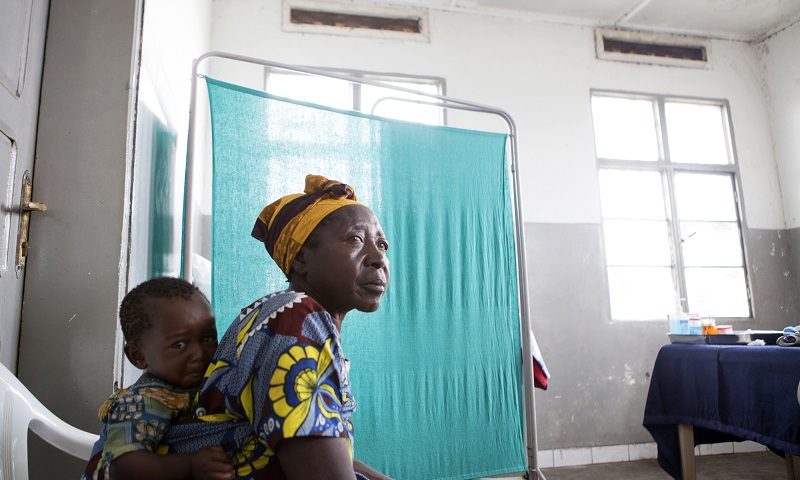
The Agency for Health and Food Security (AHEFS) is a Ghana-based civil society organization with a mission of facilitating and promoting sustainable development in Ghana and in Africa. It is the core mandate of AHEFS to contribute to achieving SDG 1, 2, 3, 6, 12, 13, 14 and 15. To ensure development interventions are impactful for vulnerable and deprived people, AHEFS employs a number of tools in its community-level interventions. Notable among the tools is participatory learning and action (PLA). The PLA methodology employs communication strategies that facilitate adoption of new policies, build awareness, change perceptions/beliefs, increase knowledge, increase demand for products and services, improve acceptance and trust within the family and the community, promote the adoption of best practices, improve and manage unforeseen events.
As part of activities under SDG 3.1 of reducing maternal mortality, SDG 3.2 of ending preventable deaths of newborns and children under the age of five and SDG 3.3 of ending AIDS, tuberculosis, malaria and neglected tropical diseases in Ghana, AHEFS continues to implement malaria prevention activities across a wide geographical area in Ghana’s remote communities. This article highlights the importance of participation in project programming and implementation using a case of USAID Promoting Malaria Prevention and Treatment (ProMPT) Project implemented in Amansie Central District of Ashanti Region of Ghana.
Our Innovative Approach
As part of our project implementation strategies, analytical tools such as cost benefit analyses were used to help clients appreciate the cost of purchasing long lasting insecticidal nets (LLIN) versus contracting malaria, being admitted to hospital and having relatives commuting to hospital for visits, for one episode of malaria.
A problem tree analysis was also used for clients to identify the cause of malaria and the effects of malaria on an individual, family, community and society at large. Based on the problem tree analysis, an objective tree analysis was conducted to for clients to establish a means-end relationship by setting objectives towards solving problems identified to reach the ultimate goal of ending malaria in target communities. This process was termed the logical framework approach.
The project involved facilitation of meetings at the regional, metropolitan, municipal and district assemblies (MMDAs), sub-district and community level. At the regional level, stakeholders in malaria were met, introduced and sensitised to the project to secure ownership and promote sustainability at the regional level. At the MMDA level, NGOs and community-based volunteers (CBVs) were trained to facilitate the PLA process using community entry, body mapping, risk mapping, cue cards, group discussion and educational facilitation to get clients to the ‘aha’ moment - a process known as animation. Many cues are used in the process to promote permanent storage of malaria messages in their long term memory and thus maintain a permanent change in behaviour and attitudes. The trained participants were consulted on quarterly basis to present findings to stakeholders on the project. Over the period, trained NGOs reported on activities of CBVs in their respective communities.
The Project Story
In a community-level impact review meeting organised, Mrs Diana Kumbour of Nyamebekyere community told a simple story in which she remarked, “Before AHEFS came to our community, I used to get repeated episodes of severe headaches, bodily weakness and fever and thought it was a curse or something of a spiritual cause. My first resort during such life-threatening events was to visit the native doctor who would say some incantations and afterwards give me some herbal concoctions to drink at home. During the latter part of my pregnancy some 2 years ago, I encountered another episode that made me lose my child. Thanks to AHEFS community outreach and group discussions, I got to know about the signs and symptoms of uncomplicated and severe malaria. I understood how the mosquito causes malaria and breeds in exposed clean water sources in the home and community. I have now seen the importance of reporting promptly to the clinic or hospital whenever I am sick. Since I started sleeping in mosquito net a year ago, I have remained free from the mosquito-borne disease that made me waste a lot of money on ineffective measures. I can now use my spare money to look after my children and also grow my trade”.
Lessons Learned and Conclusion
The PLA methodology has proved very effective in community level educational and behavioural change interventions. Funding limitations, however, limit the extent of use of such methodologies. AHEFS invites development partners to support our project in Ghana to achieve the SDGs related to health and food security.
For more information about our work, please visit us at http://www.ahefs.org/.
Learn more about the project here.
 Welcome to the United Nations
Welcome to the United Nations